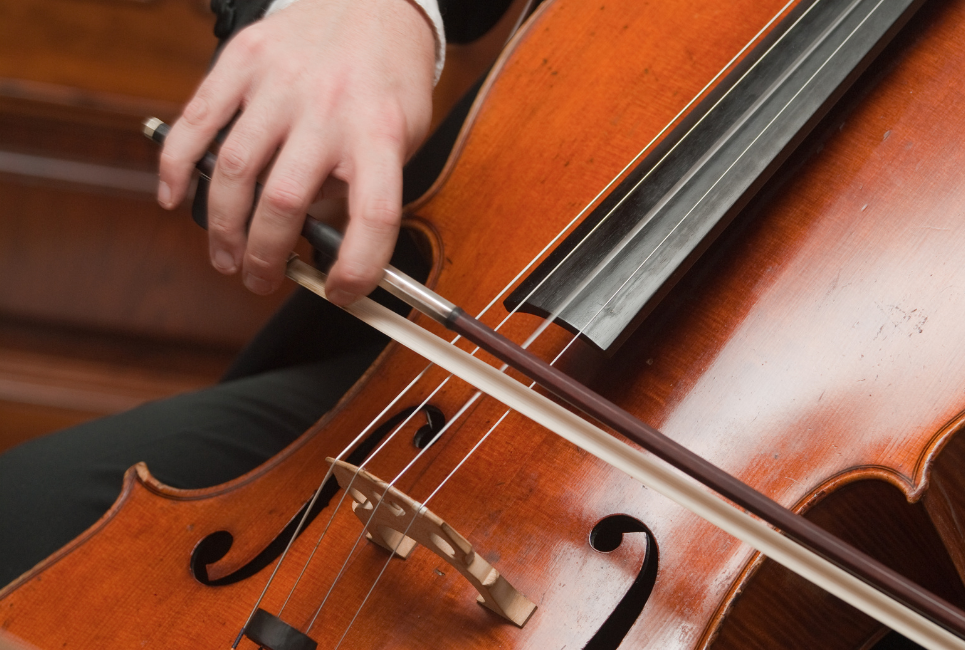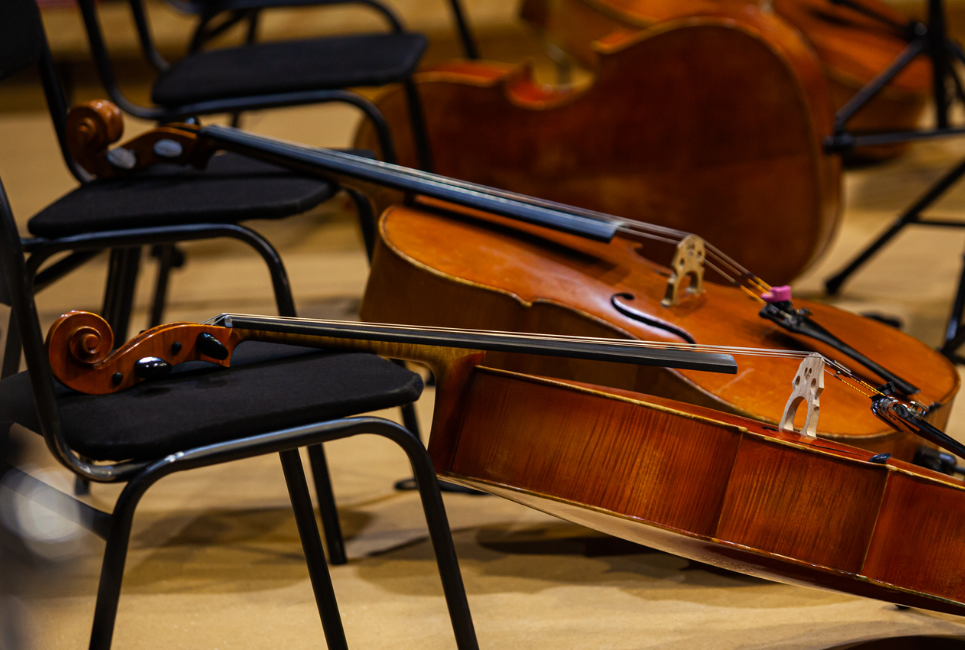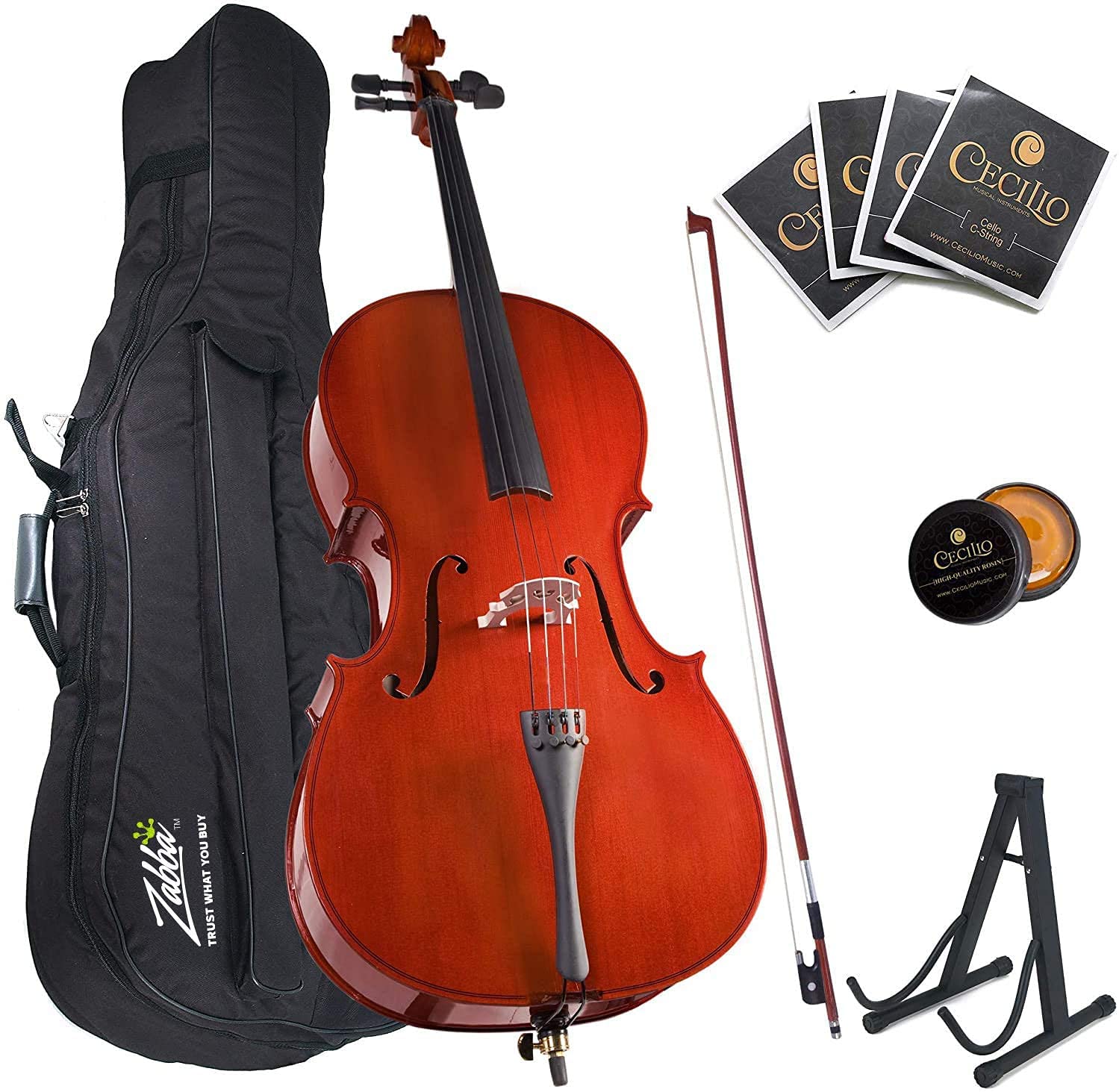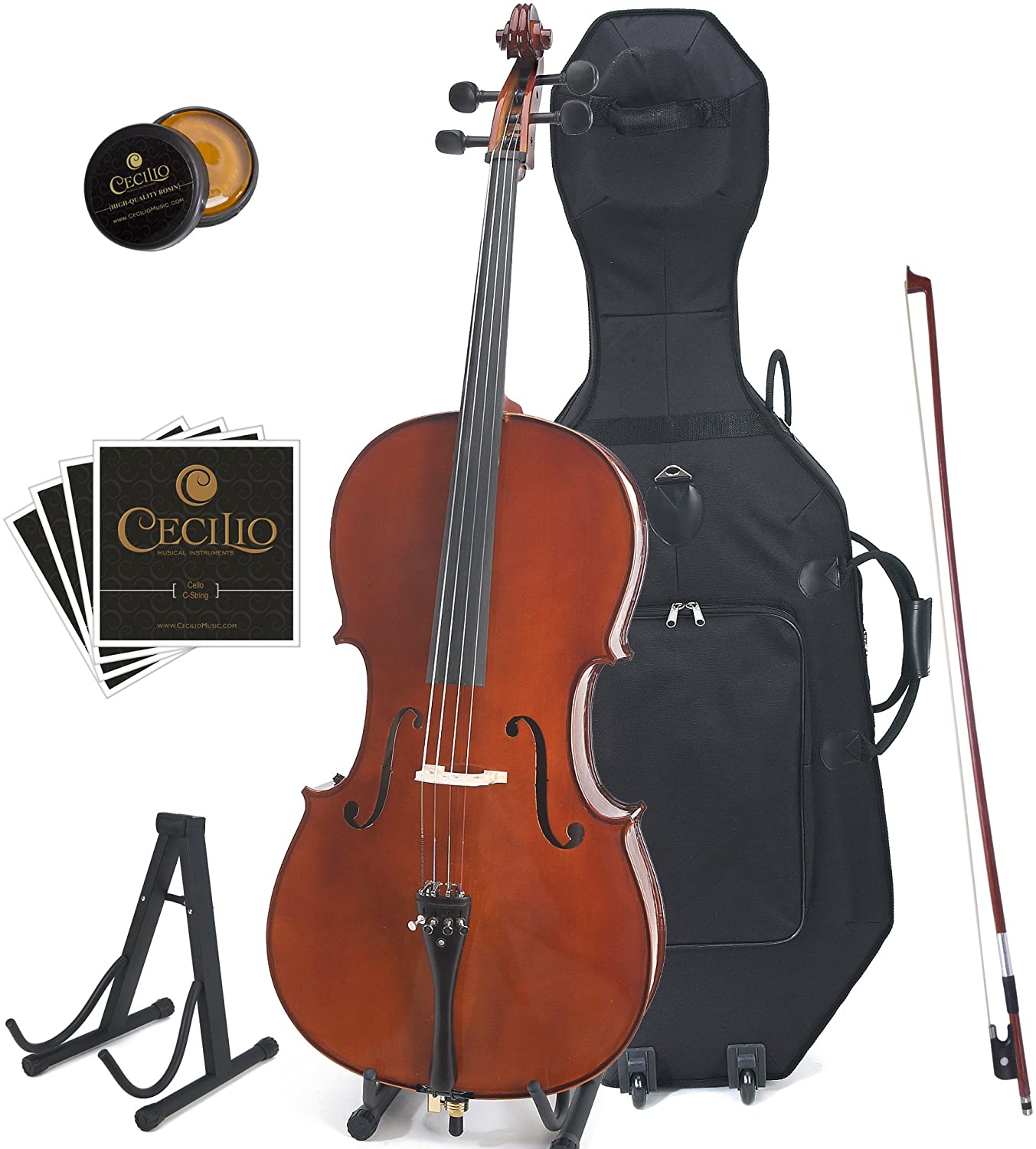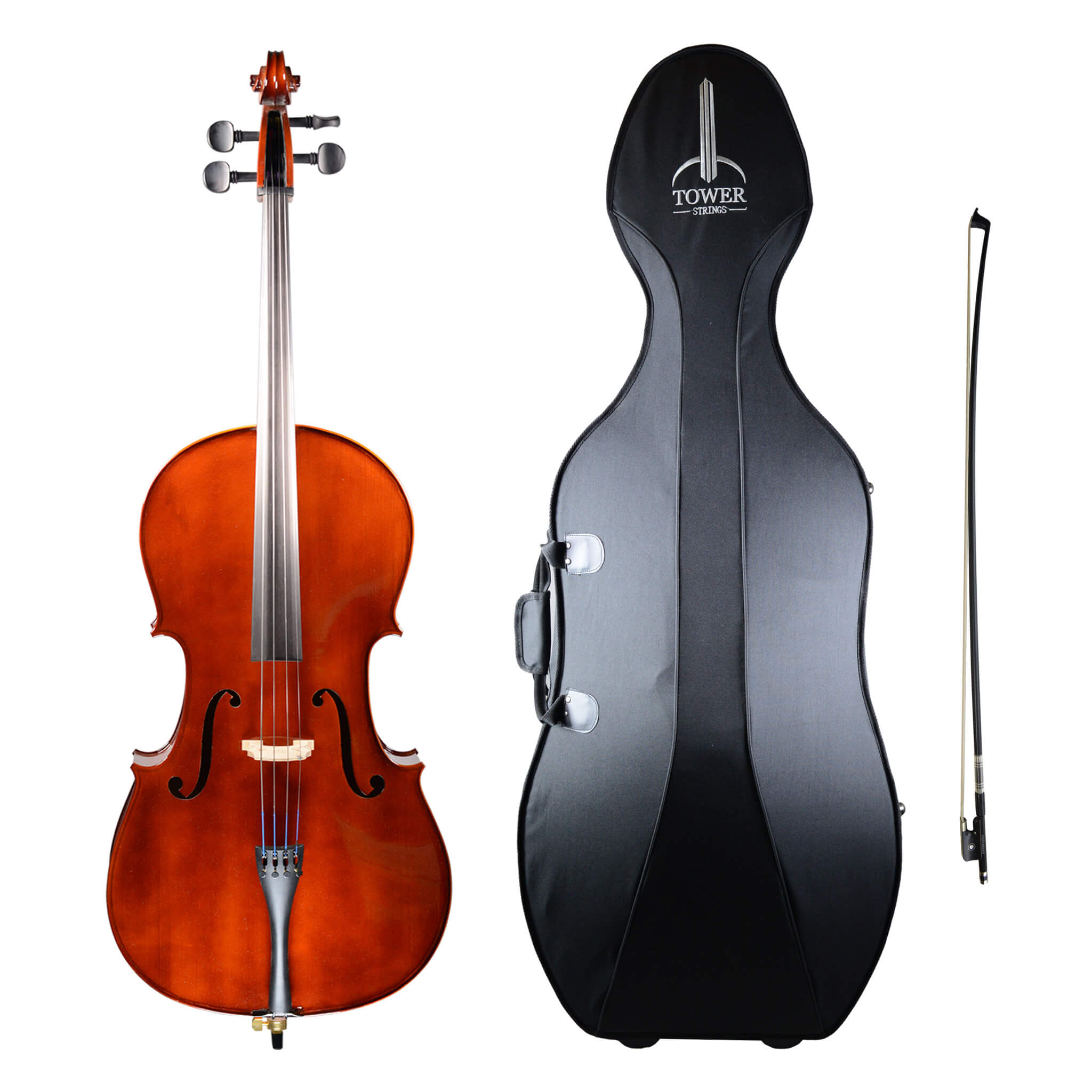- How To Find the Best 3/4 Cello Guide: Our Top Pick! - November 17, 2021
The first time I saw a cello I was amazed at its size, the first time I held one was more awkward than my first slow dance. Cellos are large instruments, full-size cellos are suitable for most adults. Small adults, teens, and children will find themselves needing a fractional-sized instrument. 3/4th cellos are one step below a full-size cello and most musicians who start as children will play on one at some point.
Amazon Top Picks_ Cecilio CCO-500 Cello
It’s a quality student instrument with everything needed to get started.
Other Top Pick: Tower Strings Entertainer Cello Outfit
Premium quality student instrument with every accessory you need.
All About Cello Sizing
Cello sizing generally ruins 1/10th to 4//4 or full size. ¾ cellos are one step below a full-sized instrument. Fractional-sized instruments are smaller versions of their full-sized counterparts. Made with the same design and material just configured to a proportionally smaller size. Generally speaking, a teenager who is 14 or older will use a full-sized cello, while a teen who is 11-13 will use a 3/4th cello size.
If you have a smaller student or teen or are a smaller adult yourself, you can choose your cello size based on your height.
- 1/10th – 3ft and under
- 1/8th – 3′ to 3’6
- 1/4th – 3’6″ to 4′
- 1/2th – 4′ to 4’6″
- 3/4th – 4’6″ to 5′
- 4/4th – 5’+
Embracing a Cello
Oh, the awkward embrace of the cello. I’m being dramatic but I admit I find holding the cello awkward. It’s a large instrument and requires a wide leg stance. After time, you will find holding and playing your cello to feel familiar and automatic, but don’t feel embarrassed if you struggle with getting comfortable or messing with your music or pencil. To hold the cello follow these steps:
- Sit in a chair with a firm base, so you don’t sink and can’t sit up easily. Sit towards the front of the chair with your feet on the floor.
- Adjust your cello’s endpin so that the back rests against your chest and the cello is between your knees.
- Use your knees to gently keep the cello in place.
- Place the neck and scroll of the cello to the left of your head with the lowest tuning peg roughly the same height as your ear.
- Angle the cello slightly to the right so you can reach all strings.
- If needed, use an endpin stop to keep your cello from sliding on the floor. You can use a variety of objects, including carpet pieces, as endpin stops. The ones sold commercially are typically made of rubber with a hole or indent in the center to place the endpin.
Materials and more
A traditional cello is made out of a spruce top with a maple back and sides. Student instruments and most rentals will be made out of laminated wood. Laminated wood is much more durable; therefore, it can withstand a lot of trauma. The cello that I first rented used laminated wood. The front had been smashed at some point, but it was still playable (mostly). Aged woods are preferred as they lend a richer tone to the cello and provide more personality.
Carbon fiber and aluminum have also been used to make cellos. Carbon fiber has become an increasingly popular material due to its durability and weather resistance. It’s honestly a must-have on my list, and I plan to add a carbon fiber violin to the collection in the future.
The pegbox and scroll are typically made out of maple. While the fingerboard, tuning pegs, and tailpiece are usually made out of ebony due to its durability. The endpin can be made out of wood, metal, or carbon fiber.
What’s in your instrument case?
You don’t leave the house without your essentials, and you can’t play the cello without essentials either.
Bow
Fractional-sized instruments require fractional-sized bows. Most student instruments come with a bow and other basic accessories. If you are purchasing a bow separately, remember the 1/10th rule. Your bow should be roughly 1/10th the value of your instrument.
Bows are made out of many materials. I’m partial to carbon fiber, but brazilwood and pernambuco wood are also standard options. Most student outfits will come with a basic brazilwood bow. It’s a cheap, durable material that is easily replaced when the hair wears off. While professionals are more likely to play with a pernambuco wood bow worth several thousand. Carbon fiber and hybrid bows are mid-range materials. Cheaper than pernambuco wood but sturdier than brazilwood. They aren’t as nuanced as Pernambuco, and most will pair well with a student or intermediate outfit.
Case
Cases are important. They are your instruments home when you aren’t playing. I personally like hard cases, as they provide an extra layer of protection. They can be expensive but worth the extra cash if you have children or large pets that could easily knock your instrument over.
Student outfits typically come with a soft case typically made of nylon. These cases are popular for students who take their instrument with them to school or full-time musicians. They provide enough protection against the occasional soft bump, but a hard drop or crash would still do damage. Lastly, they are affordable. Even the Bobelock soft case is under $150. Hard cases typically run $300 or up.
Strings
It goes without saying a fractional instrument needs fractional-sized strings. If your cello comes with poor quality strings or you want something different, most large string manufactures like D’addario, Piastro and Thomastik will sell their most popular strings in a 3/4th size. Packaging usually indicates the size of the strings, but it never hurts to clarify with a store assistant. If you are purchasing online, double-check the product description to make sure you have the correct size.
Other Accessories
This category is for all the other things you need or might want. Most student outfits will come with many of these things like a polishing cloth and rosin. Others you will acquire over time as you figure out what you need.
Rosin is the most important, arguably the only essential on this list. Rosin is made from boiled pine sap and cooled to produce a hard substance. When scratched or rubbed, it produces a powdery white substance that is quite sticky. It is rubbed on the bow hairs to help the bow stick and vibrate against the strings. You can find many different types of rosin, from dark to light. Dark rosin is often used on cellos, but it’s up to musicians’ preference. The darker the rosin, the stickier it will be.
Well, that’s a price tag!
Cellos aren’t cheap, which is probably why they aren’t as accessible as their smaller counterparts, the violin, and viola. They are large instruments that take a considerable amount of material to make. A good cello that you can keep around for years to come will cost around a thousand dollars. A professional cello will cost tens of thousands of dollars. This is why many students, especially those that are still growing, rent their instruments. They accrue interest during the time that they rent; eventually, they can use that money towards the purchase of their own instrument. This significantly cuts down on the out-of-pocket costs, although you pay more over time.
Remember that used cellos, especially those made by a known luthier and with quality materials, go up in value over time. As long as the instrument is well cared for, the value will increase as the wood ages. Student instruments tend to decrease in value due to low-quality materials and damage.
Recommendations
Criteria
These selections were chosen based on their reviews and brand reputation. I’ve included picks that can fit into most budgets from beginner to intermediate levels.
Amazon Picks
Mendini by Ceclio
Mendini and Cecilio have made a name for themselves over the last decade by producing inexpensive Chinese-made instruments. These instruments won’t win any luthier awards, but they’ll get a new player through the first few years. The CCO-100 comes with everything you need to get started, but I recommend bringing it to a luthier to be set up. The bridge is not installed before shipping. This can cause the soundpost to shift, among other issues. A professional can get you set up and adjusted correctly. I’d don’t advise doing this yourself. I also recommend a string upgrade to D’addario preludes or similar for a student. Cecilio strings are notorious for breaking during tuning, which can be scary and frustrating for a new player. I wouldn’t expect to pay much less than $500 for a cello outfit, even if the instrument is on the cheaper side due to adjustments.
Pros
- Comes with a soft case, bow, rosin, extra strings, and instrument stand.
- Laminated spruce top and maple back and sides
- Alloy tailpiece with integrated fine tuners
- Varnish with inlaid purfling
- Inexpensive
- Comes in fun colors
Cons
- Machine Purfling
- Maple fingerboard and pegs
- Machine-made
Cecilio CCO-500 Cello
Another Cecilio pick, this time with considerable upgrades to construction and quality. Unlike the CCO-100, the 500 is hard carved with a solid spruce top and flamed maple neck, back, and sides. The fingerboard, pegs, and tailpiece are made from ebony. The outfits comes with all the basics you need to get started. I still recommend a trip to the luthier and a string upgrade.
Pros
- Hand-carved spruce front, flamed maple back, sides and neck.
- Ebony fingerboard and pegs
- Varnished with purfling
- Not laminated
- Comes with a case, bow, rosin, and extra strings.
- Inexpensive
Cons
- Not the best quality material
- Machine purfling
Other Picks
Tower Strings Entertainer Cello Outfit
Fiddlershop is one of my favorite music stores. Based out of Florida and run by a father and his son, you won’t find better customer service and knowledge than their team. The Tower Strings Entertainer Cello Outfit is their lowest prices student model. As a lover of Tower Strings instruments myself, I can’t recommend this cello enough. While expensive, it’s made out of quality material and backed with decades of knowledge about string instruments. I won’t lie, this cello out is not cheap, but it will last a long time, comes with quality accessories, and retains its re-sell value when cared for.
Pros
- Spruce top with maple back and sides
- Wood aged for at least 24 months
- Ebony fingerboard and pegs
- Aluminum tailpiece with built-in finer tuners
- Prelude Strings
- Comes with a hard foam case, carbon fiber bow, Holstein premium rosin, endpin stop, practice mute, polishing cloth, and tuner.
Cons
- Expensive
FAQ
Answer: 3/4th cellos are about 26 to 27 inches tall, while their full-size brethren are 30 inches or taller.
Answer: This is an interesting question, and honestly, I don’t have a concrete answer. Cello weights differ depending on the material used and construction. For example, laminated student instruments will weigh more than normal cellos, but it’s hardly noticeable. On the other hand, electric cellos can weigh considerably more due to the hardware components necessary for the amp.
Answer: This is generally fine. If you are on the border between two sizes, it’s okay to size up. However, I always recommend going to a luthier to get properly fitted. You may find a 3/4th cello to be a lot more comfortable than full size and vice versa.
Bottom Line
At the end of the day, you can’t go wrong with the Cecilio CCO-500 for an affordable student choice. It won’t break the bank, and it won’t break your ears, but you will outgrow it. If you have the extra money, that sweet upgrade to the Tower Strings Entertainer will keep you playing for years to come. If you are a growing student, I highly recommend holding out and renting until you move into a full-sized instrument.
Looking for more interesting readings? Check out:

